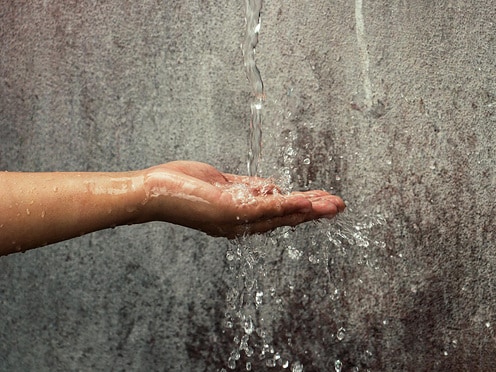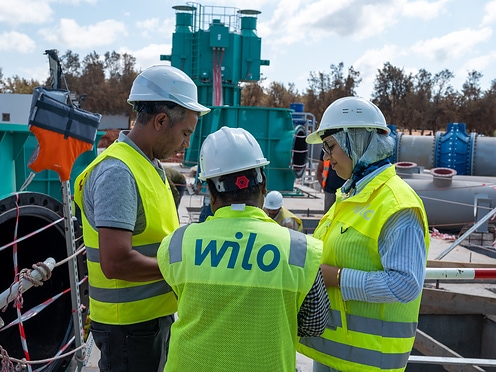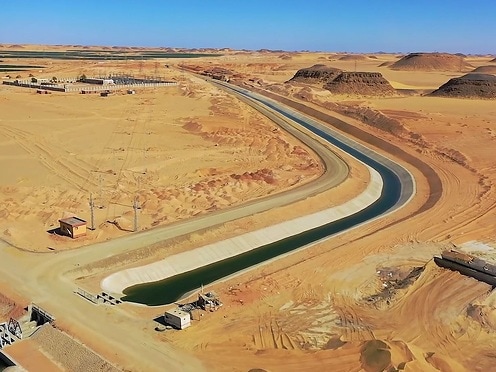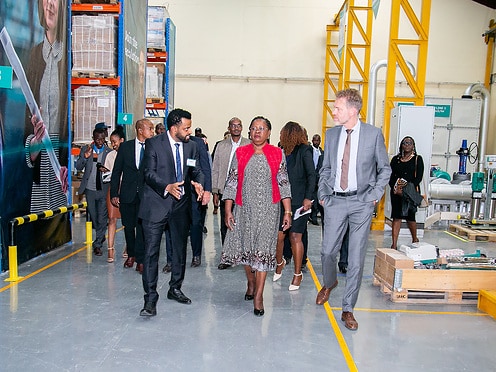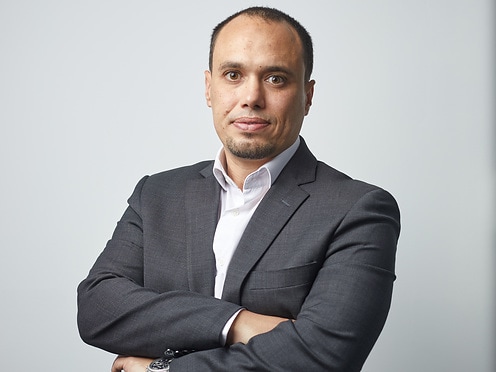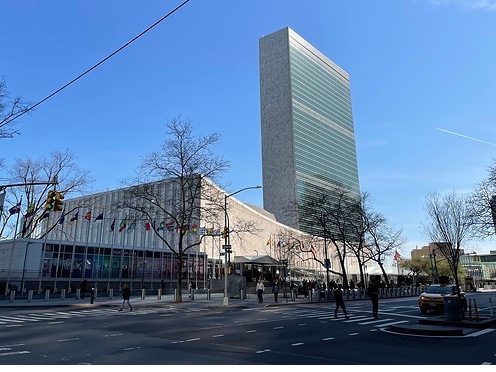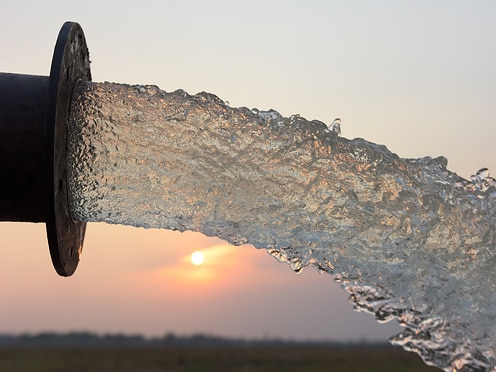Global sanitation problem: inspirational projects
In Uganda’s capital Kampala, only one in ten residents has access to toilets connected to the sewage system. 90 per cent of the 1.5 million people rely on latrines that collect sewage on site. However, it is often not disposed of properly afterwards or ends up in clogged and already overfilled gullies. This results in faeces contaminating the ground water and providing the basis for infectious diseases. This mainly affects people in the slums and informal settlement areas of Kampala: they have virtually no access to toilets with sewage systems and often get their drinking water from wells with ground water – a health hazard that is virtually impossible for them to avoid.
This text is part of Wilo's annual report 2022.

Agenda 2030: access to water, sanitation, hygiene
The situation in Uganda highlights a global problem: according to the World Health Organisation (WHO) and the children’s charity UNICEF, around 3.6 billion people, almost half the world’s population, do not have safe sanitation facilities in their homes. This includes, for example, a toilet that ensures that people do not come into contact with waste matter, as well as a system that disposes of the excreta safely. However, safe sanitation is vital for general health, for children to develop healthily and for the social and economic progress of a society. The United Nations also takes this view. As part of their 2030 Agenda, they have set 17 goals for sustainable development, known as the Sustainable Development Goals (SDGs). The sixth goal calls for all people to have access to water, sanitation and hygiene (WASH). However, it is not certain whether this target will be reached by 2030. Only one in four countries is currently on track with its national sanitation and hygiene targets. “We are not at all on track to achieve Sustainable Development Goal 6 by 2030”, writes UN Water on the current monitoring of the development goal. “Without rapid transformative progress, the world risks missing the mark.”
Good hand hygiene cannot be taken for granted
Other current figures also show that there is still a lot to be done: almost 500 million people in the world must relieve themselves outdoors. 2.3 billion people cannot wash their hands with soap and water in their homes. 670 million people have no access to hand hygiene at all. This isn’t with consequence: more than 1,000 children under the age of five still die every day from diarrhoeal diseases caused by contaminated water and poor sanitation.
Serious situation in Central and West Africa
The World Health Organisation and UNICEF published a joint statement for the UN World Water Conference in March this year. It illustrates the scale of the problem: “The world needs to at least quadruple the current rates of progress in order to achieve universal access to safely managed WASH services by 2030. Progress needs to be even faster in fragile contexts and the poorest countries, to protect people’s health and futures.” The situation is particularly dire in West and Central Africa. “Devastating storms, floods, and historic droughts are already destroying facilities and homes, contaminating water resources, creating hunger crises, and spreading disease”, says UNICEF Director of Programmes Sanjay Wijesekera. “But as challenging as the current conditions are, without urgent action, the future could be much more bleak.”
Regional disasters paralyse supply
Sanitation problems can also be triggered by one-off or regional events. As a result of the Russian war of aggression, up to 16 million people in Ukraine alone lived in places without secure water supply and sewage disposal last year. And the earthquake in the Turkish-Syrian border region in February of this year also destroyed the sanitation infrastructure and with it access to clean water over a large area. A central component of emergency relief measures is therefore the restoration of sanitation infrastructure. This is to ensure that infectious diarrhoeal diseases such as cholera and typhoid cannot spread. Wilo technology is also used in such emergency measures after disasters – for example PAUL, a portable and energy self-sufficient water treatment system in the form of a rucksack.
International organisations invest in sanitation
Back to the structural problems: the WHO, UNICEF and many other international organisations are currently working harder than ever to solve them. In doing so, they focus primarily on five fields of action: Creating the legal and organisational framework for sanitation. Tapping into sources of public and private funding to invest in infrastructure. Helping countries with poor sanitation build up knowledge so that they are better equipped to manage the problem themselves. Collecting data in order to be able to show the extent of the problem and the impact of measures in figures. And supporting and encouraging innovative approaches to find new solutions.
New sanitary facilities at schools, hospitals and mosques
The Sanitation for Millions programme, for example, operates in these fields of action. Back in 2016, the German Federal Ministry for Economic Cooperation and Development (BMZ) commissioned the Deutsche Gesellschaft für Internationale Zusammenarbeit (GIZ) to implement the programme together with local partners. Since then, the programme has built and renovated sanitary facilities in mosques in Jordan, among other places. The focus was primarily on women and people with disabilities. In Uganda, the programme has improved sanitation and hand-washing facilities in schools and hospitals. And in Pakistan, it has established a concept to treat sewage at a local level. Thanks to measures like this, the programme has equipped almost 300 public institutions with sanitation facilities and improved access to adequate sanitation for almost two million people.
Kampala works on infrastructure
In the meantime, the city administration of the Ugandan capital Kampala has also taken measures to improve the lives of its inhabitants. It is currently introducing clear and effective regulations for handling sewage. Minimum standards are being set for how latrines should be operated. And it is developing guidance for the design, construction and operation of sanitation facilities in Kampala. It remains to be seen whether such measures will be enough to provide every resident with adequate sanitation and access to clean water by 2030. For the people of Kampala, however, it is already an important step in the right direction.
Approaches to sanitation against a difficult backdrop
Almost half of humanity has no access to safe, hygienic sanitation. In particular, access to safe toilets with functioning sewage disposal is a major problem. However, this is of central importance for the health and development of societies. The UN is calling for all people to have safe access to water, sanitation and hygiene (WASH) as part of Sustainable Development Goal 6 of the Agenda 2030. International organisers are sounding the alarm that this target will be difficult to achieve by 2030. The situation is particularly dire in West and Central Africa. However, institutions are adopting sound approaches and launching successful programmes to address the issue. They provide hope that the situation will improve in the coming years.

